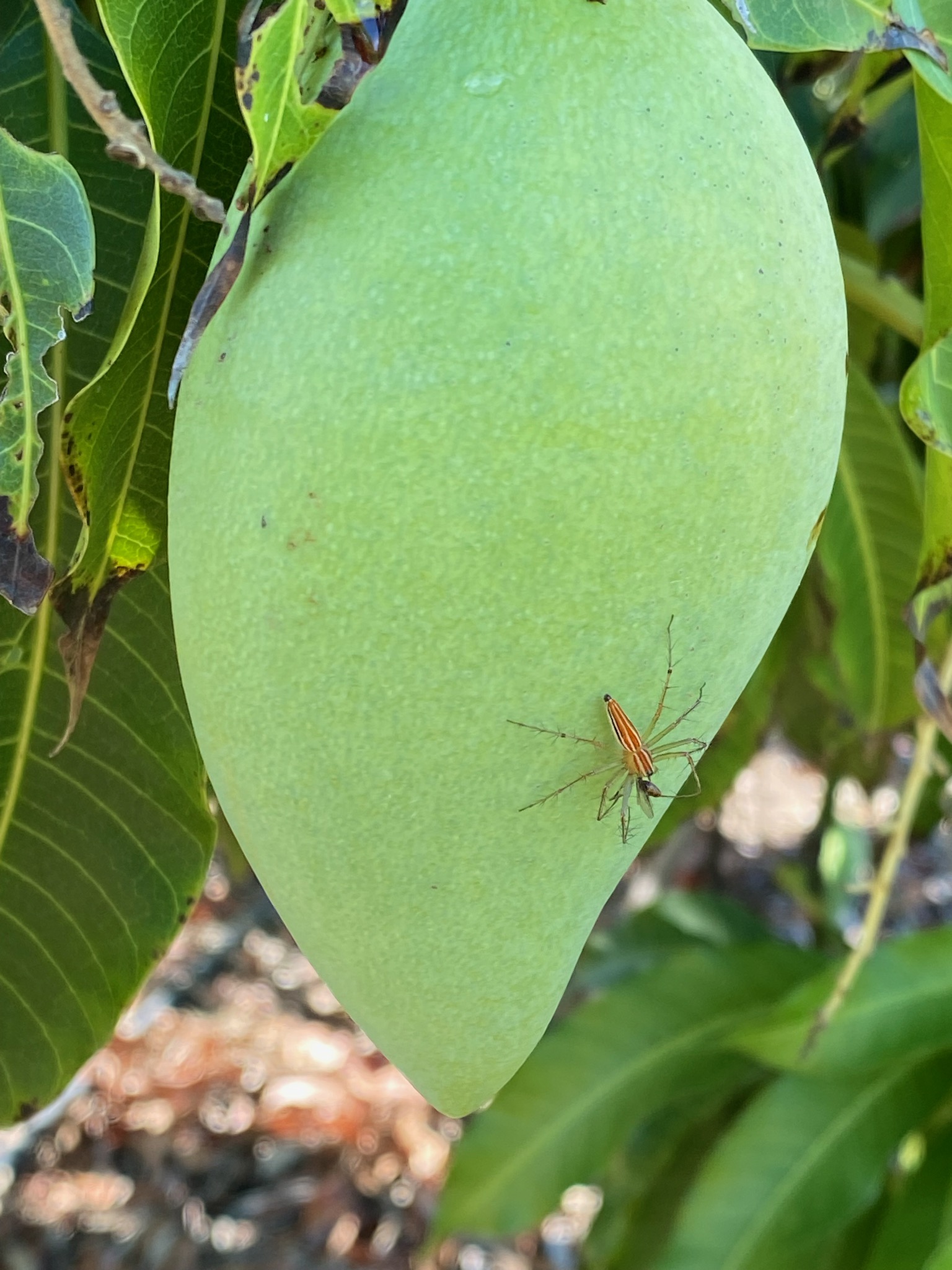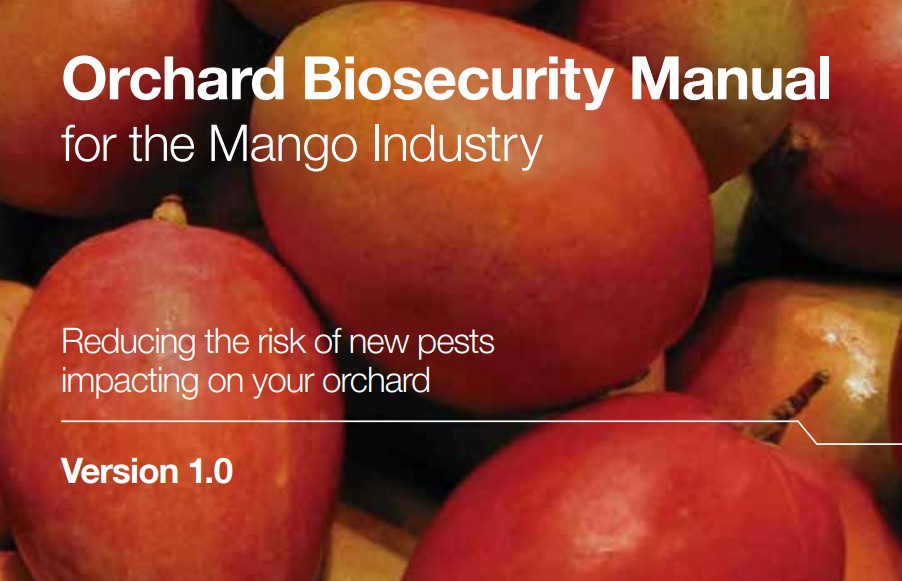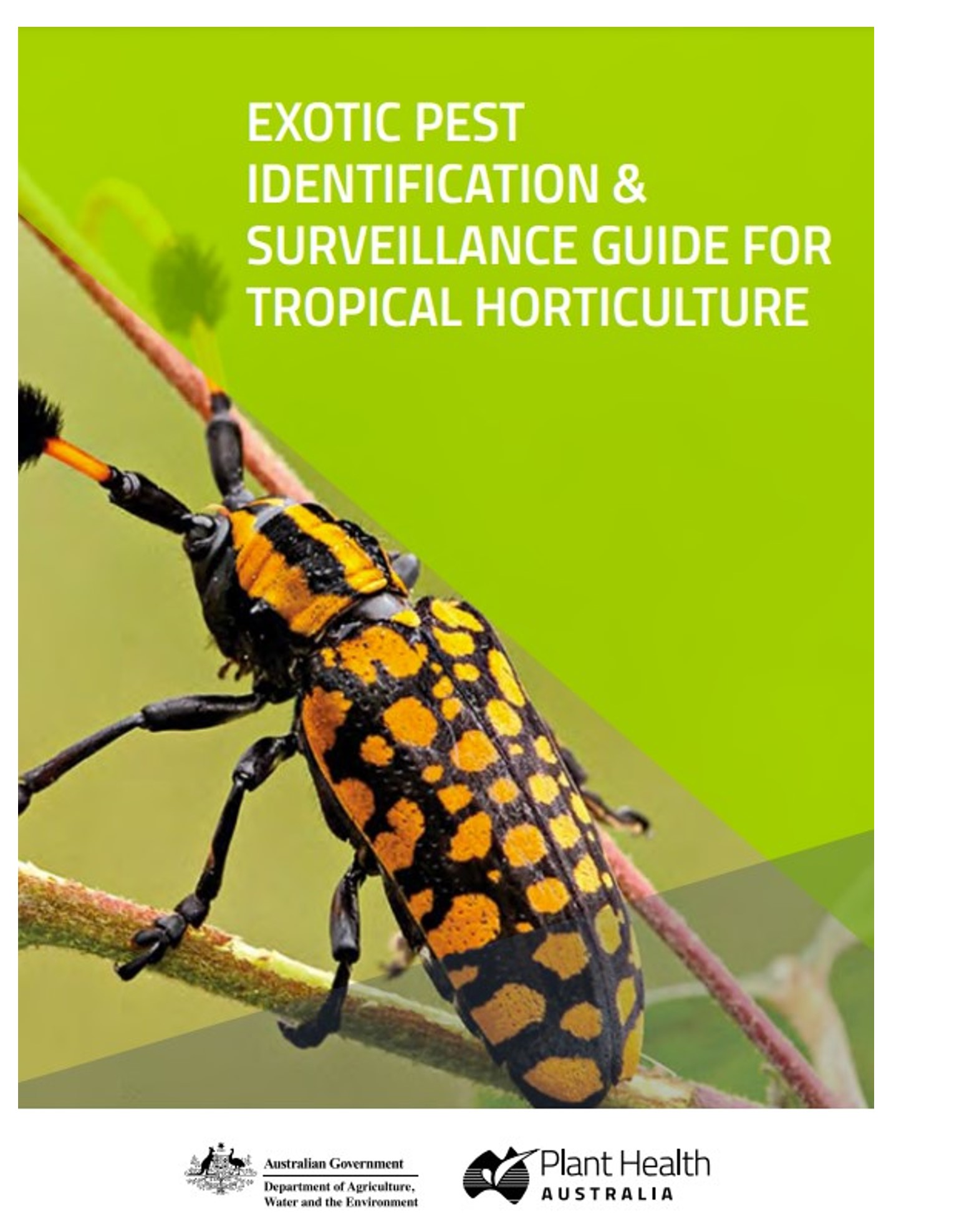Biosecurity
The integrity of the Australian mango industry is underpinned by robust biosecurity mechanisms. An ongoing proactive approach to biosecurity and vigilant monitoring is essential to minimise the risk of pests and respond effectively, and maintain confidence in the industry. With this approach, the industry is better placed to maintain domestic and international trade and negotiate access to new overseas markets.
This section of the best practice resources covers:
- What is biosecurity?

- Farm biosecurity
- Biosecurity obligations and reporting
- Emergency Plant Pest Response Deed
- The Mango Industry Biosecurity Plan and Manual
- Practical biosecurity surveillance resource for tropical plant industries
Back to Main Pest & Disease Page
What is Biosecurity?
Biosecurity is the management of risks to the economy, the environment, and the community, of pests and diseases entering, emerging, establishing or spreading.
Biosecurity can be implemented off-shore, at the Australian border and on-farm. By implementing the recommended measures in your day-to-day operations, you will improve your own biosecurity and that of your region, while minimising production losses and unnecessary costs.
Farm biosecurity
 Australia’s geographic isolation has meant that we have relatively few of the pests and diseases that affect agricultural industries overseas. Freedom from these exotic pests and diseases is a vital part of the future profitability and sustainability of Australian agriculture. Biosecurity allows us to preserve existing trade opportunities and provide evidence to support access to international markets.
Australia’s geographic isolation has meant that we have relatively few of the pests and diseases that affect agricultural industries overseas. Freedom from these exotic pests and diseases is a vital part of the future profitability and sustainability of Australian agriculture. Biosecurity allows us to preserve existing trade opportunities and provide evidence to support access to international markets.
Farm biosecurity is a set of measures designed to protect a property from the entry and spread of pests and diseases.
Farm biosecurity is your responsibility, and that of every person visiting or working on your property.
Producers play a key role in protecting Australian plant and livestock industries from pests and diseases by implementing sound biosecurity measures on-farm.
If a new pest or disease becomes established on your farm, it will affect your business through increased costs (for monitoring, production practices, additional chemical use and labour), reduced productivity (in yield and/or quality) and/or loss of markets. Early detection and immediate reporting of an exotic pest or disease increases the chance of effective and efficient eradication.
The Farm Biosecurity program, managed jointly by Plant Health Australia (PHA) and Animal Health Australia (AHA), is an important part of Australia’s emergency animal disease and exotic plant pest management systems. It provides practical advice and information to assist producers and helps PHA, AHA, industries and governments meet their obligations under the Emergency Plant Pest Response Deed.
If you spot anything unusual, call the Plant Pest Hotline 1800 084 881.
The Farm Biosecurity website has tools, tips and manuals to help you implement farm biosecurity on your property. You will also find individual profiles for a range of livestock and crops: or you can create a profile tailored to your farm.
Biosecurity obligations and reporting
Biosecurity obligations can vary from state to state. Click on the links below to see the requirements in your state:

Any unusual plant pest or disease should be reported immediately to the relevant state or territory agriculture agency through the Exotic Plant Pest Hotline (1800 084 881).
Early reporting increases the chance of effective control and eradication.
How does it work?
Calls to the Exotic Plant Pest Hotline will connect to an automated system that allows you to choose the state or territory that the call relates to. Calls will then be answered by an experienced person in your state.
What questions will you be asked when first reporting a pest, disease or weed to the Exotic Plant Pest Hotline?
- What have you found?
- Can you see any damage or impact?
- Can you send a photo to help with identification?
- Where do you think it may have come from?
- Have you imported any goods (including mail) from overseas or interstate lately?
- Have you hosted any visitors from overseas or interstate lately?
- You will then be advised on how to contain or reduce the spread of the issue until it is formally identified.
Every report will be taken seriously, checked out and treated confidentially.
Emergency Plant Pest Response Deed (EPPRD)
The EPPRD is a formal, legally binding document between Plant Health Australia (PHA), Australian and state/territory governments, and plant industry signatories. As a signatory to the EPPRD, the Australian Mango Industry Association (AMIA) has a seat at the decision making table and also contributes to funding if an approved Response Plan is implemented to eradicate an Emergency Plant Pest (EPP).
Under the EPPRD, the mango industry has a responsibility to report suspect pests. The earlier a new pest is detected, the greater the chance an eradication response will be mounted and the more likely it will be successful.
An underlying principle of the EPPRD is that growers are neither better nor worse off as a result of reporting a suspect EPP. As a result, grower reimbursement payments (Owner Reimbursement Costs; ORCs) may be included for direct costs incurred as a result of the implementation of an approved Response Plan. ORCs may cover direct grower costs or losses through such actions as the destruction of crops, enforced fallow periods, replacement of trees and additional chemical treatments.
Calculation of ORCs is prescribed in the EPPRD, including the different formulae used to accommodate the wide range of crops grown by Industry signatories. Mango ORCs are calculated using the “Perennial Trees” formula. To ensure that these calculations are accurate, growers should keep records of key value information (example record sheet provided on page 24). It is important to remember that ORCs only apply to approved Response Plans aimed at eradication, which are more likely to be developed following early reporting.
The Mango Industry Biosecurity Plan and Manual
The Mango Industry Biosecurity Plan identifies exotic pests and outlines key threats, risk mitigation plans and contingency plans for the industry. The Biosecurity Plan and the Orchard Biosecurity Manual for the Mango Industry were developed with Plant Health Australia (PHA) in 2011. The AMIA is a member of PHA, the national coordinator of the government-industry partnership for plant biosecurity in Australia. PHA works with its members to address high priority plant health issues. Members include the Australian Government, all State and Territory Governments and a range of plant industry organisations. For more information, visit the PHA website.
Practical biosecurity surveillance resource for tropical plant industries
Surveillance is a cornerstone of effective biosecurity and is essential to managing plant pests in Australia. Plant Health Australia (PHA), the national coordinator of the government-industry partnership for plant biosecurity in Australia, recently released the Exotic Pest and Identification Surveillance Guide for Tropical Horticulture to improve biosecurity surveillance in northern Australia.
Funded by the Australia Government Department of Agriculture Water and the Environment, the exotic pest guide is designed to increase awareness of exotic pests and provides useful information on what to do if a suspected pest is found.
The guide is divided into two sections:
- The biosecurity and surveillance section describes key aspects of on-farm biosecurity and how to undertake pest surveillance.
- The identification of key exotic pests’ section provides information on the high priority exotic pests for several of the horticultural crops grown in northern Australia.
Visit the PHA website to download a copy of the Exotic Pest and Identification Surveillance Guide for Tropical Horticulture, or contact our IDOs.
Follow PHA on Facebook, Twitter and LinkedIn for the latest plant biosecurity news.